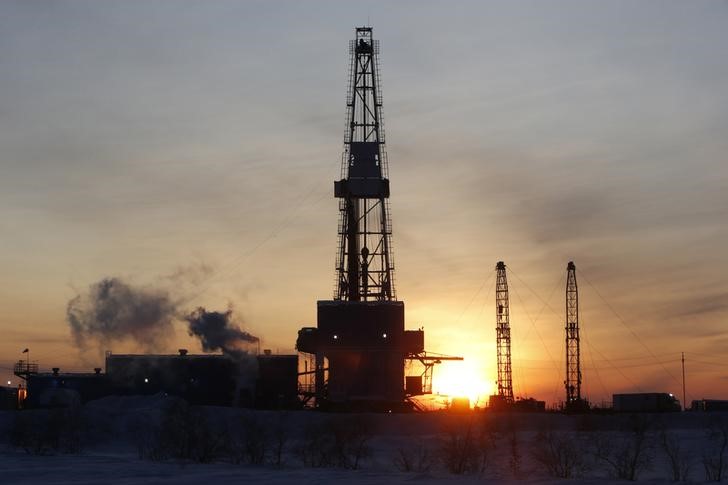Investing.com-- Oil prices settled higher Monday, as investors weighed rising tensions in the Red Sea and Middle East against ongoing demand concerns amid likely higher-for-longer U.S. interest rates.
By 14:30 ET (19:30 GMT), the U.S. crude futures rose 1.4% to $77.58 a barrel and the Brent contract added 1.1% to $82.53 a barrel.
US-UK launch fresh air strikes on Houthis in Yemen
Tensions in the Red Sea continued to escalate after the UK and U.S. launched fresh strikes on Iran-backed Houthis rebels in the Red Sea.
The fresh strikes come in the wake of recent threats from Houthis of a stepping in attacks on vessels in the region as a show of solidarity with the Palestinians amid the ongoing Israel-Gaza war.
The trade lane though the Red Sea is a "vital corridor for shipping oil and oil products from the Persian Gulf to Europe and the US," ING said.
Inflation, rate cues on tap
The focus this week will be on a string of key economic readings, as well as more signals from the Federal Reserve on the path of interest rates.
Inflation data from several major economies are due this week, including Japan, Australia, the eurozone and the U.S.
In the case of the U.S., PCE price index data--the Fed’s preferred inflation gauge--is due later in the week, and is also expected to factor into the central bank’s plans for interest rates later in 2024.
Traders were seen largely pricing out chances of rate cuts in May and June, as a chorus of Fed officials warned that the bank was in no hurry to begin trimming rates.
Comments from several more Fed officials are also on tap later this week.
U.S. GDP, China PMIs awaited
There is also a second reading on U.S. fourth-quarter gross domestic product this week, which is expected to reiterate that while economic growth remained ahead of its developed-world peers, it still slowed from the prior quarter.
But growth is still expected to remain robust enough to keep U.S. interest rates higher for longer.
Purchasing managers index data from China are also due later this week, and should provide more cues on a slowing economic recovery in the country.
But a string of recent stimulus measures, as well as signs of some pick-up in consumer spending drummed up hopes over a sustained economic recovery in the world’s largest oil importer.
Goldman sees rangebound trading
Goldman Sachs expects a $70-$90 a barrel range in the Brent contract to continue for the foreseeable future as oil price volatility has fallen to pre-Covid lows.
This muted volatility despite the ongoing conflicts in the oil-rich Middle East reflects three main reasons, the influential investment bank said, in a note dated Feb. 25.
Firstly, the geopolitical risk premium remains modest, with only a $2/bbl boost to Brent from Red Sea disruptions and unaffected crude production.
Secondly, the pillars of the OPEC range framework remain in place as elevated spare capacity limits upside price risk, while the OPEC put limits downside risk.
Saudi Arabia’s decision not to increase its capacity and the decline in the elasticity of U.S. supply on shale consolidation suggest that Saudi Arabia has both the will and the means to support prices.
Finally, robust non-OPEC supply growth is likely to nearly keep pace with solid global demand growth.
(Peter Nurse, Ambar Warrick contributed to this article.)
